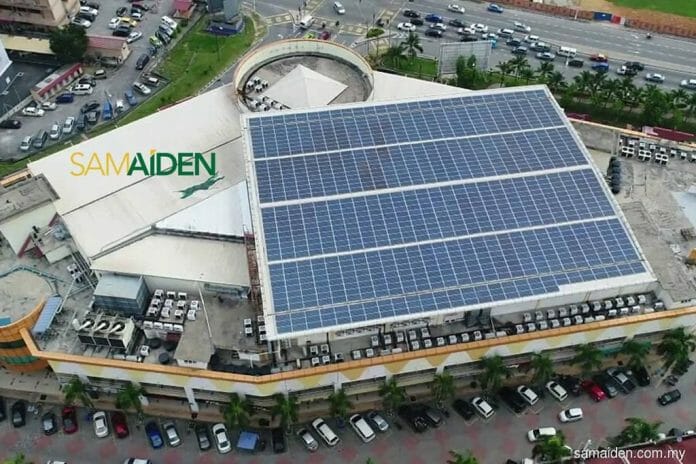Samaiden Group Bhd has emerged a big winner in solar power generation capacity’s awards under Corporate Green Power Programme (CGPP) award round, securing a total capacity of 43.32 MWac.
Correspondingly, Kenanga Research maintains its OUTPERFORM call and lifts its TP by 8% to RM1.80 (from RM1.67), based on 30 times FY25F PER, in line with the average forward PER of peers such as Sunview Group Bhd, and reflects a 5% premium given to its 4-star ESG rating.
“We raise its FY24F and FY25F net profit forecasts by 2% and 10% respectively, assuming Samaiden is to secure 15% of total EPCC jobs under the CGPP,” Kenanga said in its Company Update today (Nov 10).
It added that Samaiden has emerged a big winner in the latest round of awards of solar power generation capacity under the CGPP. It has won a total of 43.32 MWac comprising 13.42 MWac on its own and 29.9 MWac via a consortium.
“In the latest round of awards, Energy Commission (EC) announced ten winners with a total capacity of 236.58 MWac, with plant capacity ranging from 10 MWac to 30 MWac,” it said.
The research house said CGPP offers higher tariff rates and ushers in a new engineering, procurement, construction, and commissioning (EPCC) order book replenishment cycle of a total of RM2.4 billion for EPCC players, given that those under the LSS4 programme will tail off towards end-2023.
This is in comparison of Large Scale Solar (LSS) programme, as the CGPP uses a willing-buyer willing-seller model vs. an open bidding model under the LSS programme.
“We anticipate a higher tariff in the range of 25-28 sen per kWh, vs. 17-24 sen per kWh under the LSS4 programme.
“Coupled with the softening panel prices, we believe the IRR for the CGPP could be in the low-to-mid-teens, versus 8% tp 10% under the LSS programme,” it said.
Kenanga added that it favours Samaiden for the bright outlook of the renewable energy (RE) sector in Malaysia, underpinned by the government’s goal of RE making up 70% of total generation mix by 2050, among others.
The risks to Kenanga calls include if the government dials back on RE policy, too many new players in the EPCC space which will intensify competition, and escalating cost of inputs, particularly, solar panel and labour.









